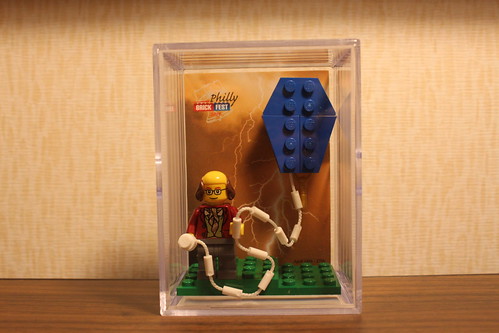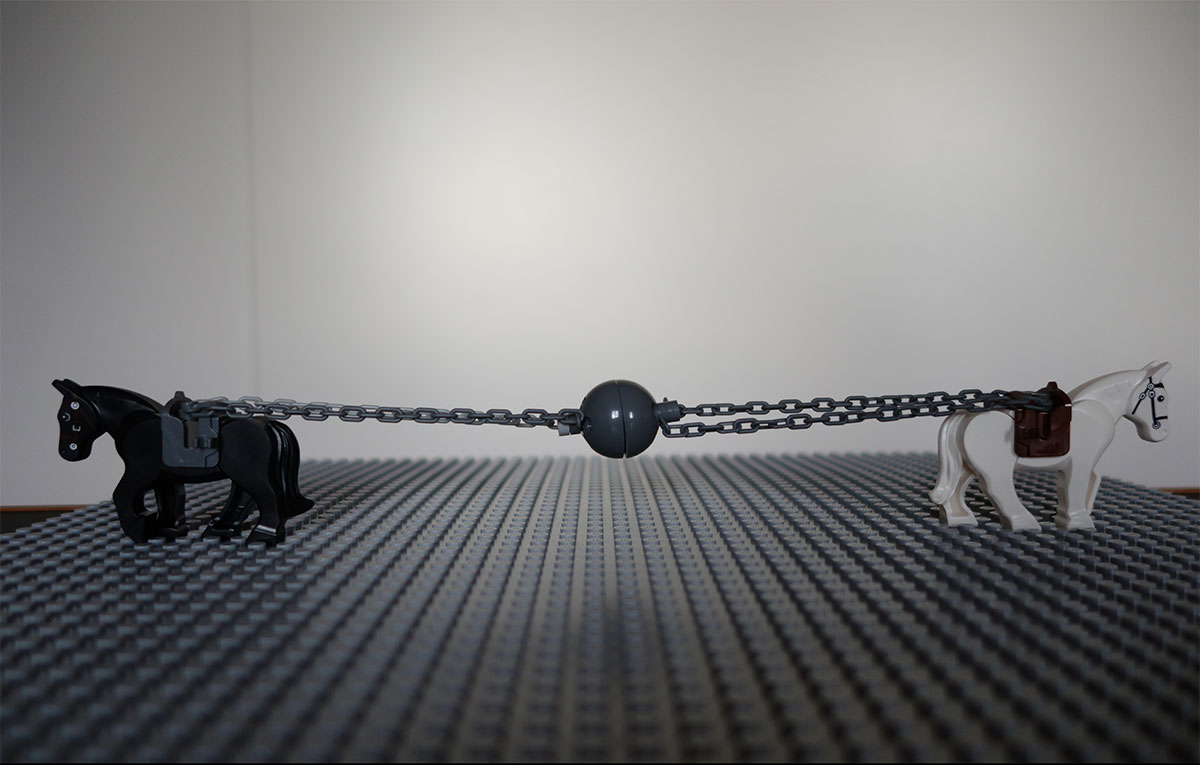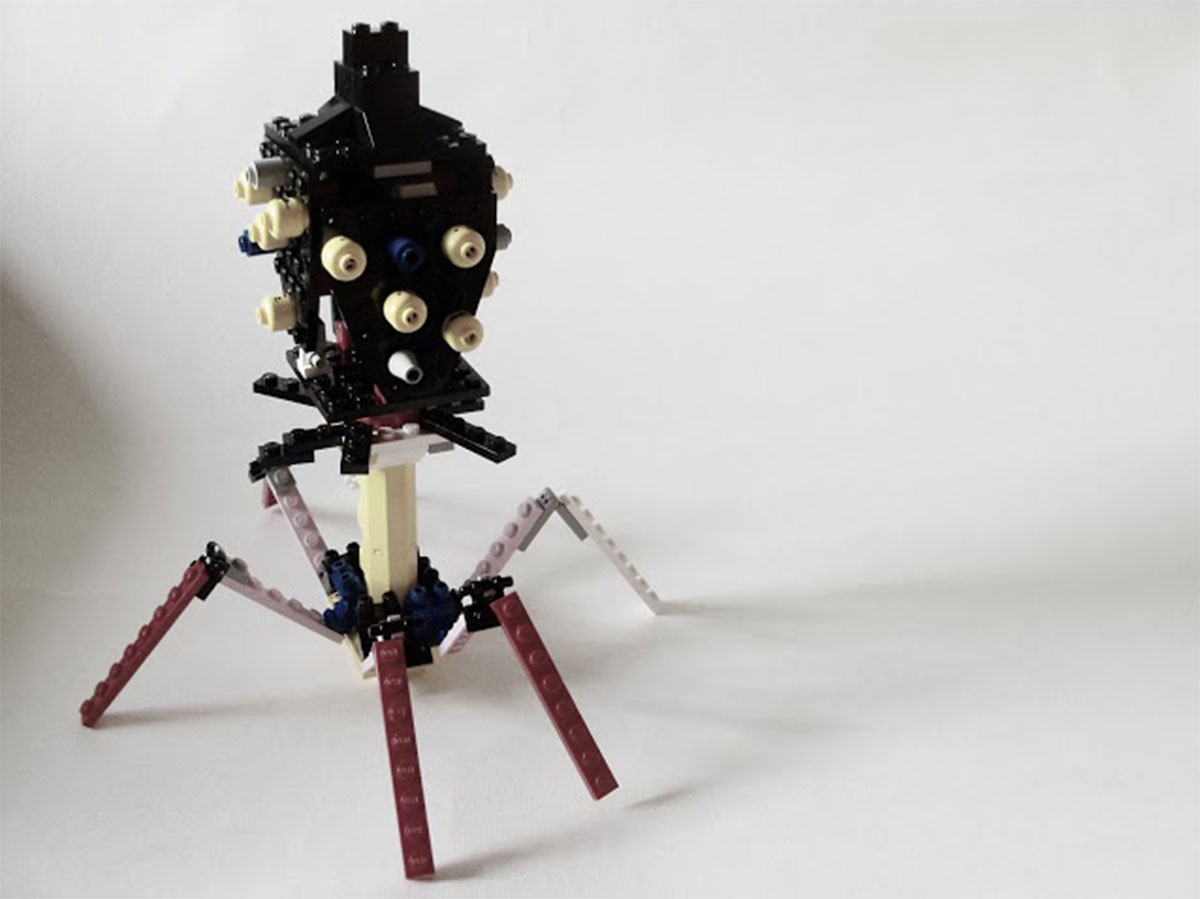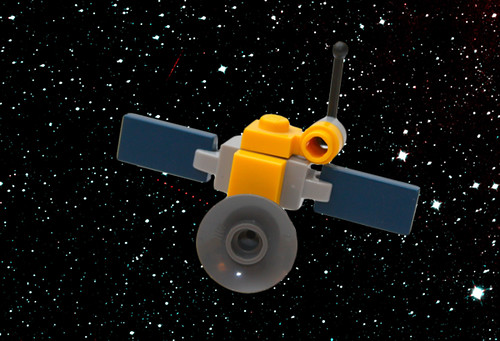In addition to being a politician and diplomat in the early days of the United States,
Benjamin Franklin (here by Tormentalous) was also a scientist and inventor. One of his most famous experiments was the kite experiment depicted here. Contrary to popular belief (and my own belief until a few minutes ago when I looked this up), his kite was not struck by lightning. Instead he flew his kite up into storm clouds and found that static electricity built up on the kite (and traveled down the wet string to the key), and he got a static shock from touching the key. From this he deduced that lighting bolts were an electric discharge, and subsequently he invented the lightning rod to protect tall buildings.
Ben Franklin lived in Philadelphia, and this weekend is Philly Brick Fest, a LEGO gathering here in Philly. I hope to be at the public exhibition with my son, so maybe I'll see you there.






